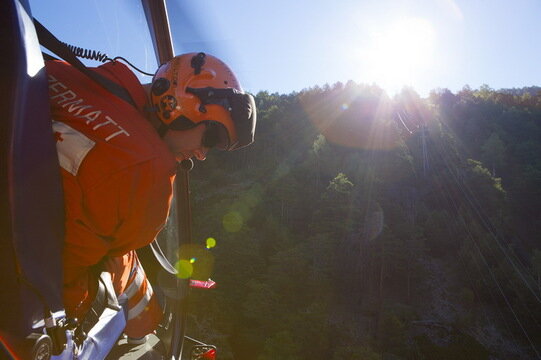HEC-HHO Equipment

Human External Cargo (HEC-HHO) Equipment
HEC/HHO and Rescue Strop History:
Historically, the rescue strop was used to transfer personnel from vessel to the shore (lighthouse, etc.) or water rescue. Rescue strop use was then extended to search and rescue for lifting persons with a hoist or a cargo sling line (Human External Cargo HEC).
Today the rescue strop is the most widely used and THE appropriate method of rescue for HHO and HEC rescue from water.
Currently:
Following worldwide significant losses the last decades, the Air Rescue Commission of ICAR has reviewed past accidents and developed this recommendation for best practice for the use of the rescue strop.
HEC-HHO Safety briefing recommendation ICAR (AIR-REC 0011)
Many rescue organizations have implemented a pause/break when lifting off to confirm everything is attached and loaded correctly. This allows also the time for a crew to do a performance check.
ICAR Recommendation (AIR-REC 0014)
It is strongly recommended to minimize the time the patients / rescuers are outside the aircraft to the smallest amount of time and to keep the number of persons involved in these operations to a minimum.
Some key elements :
-
Assess the situation (environment, number of persons, experience of crew, other solutions, etc.)
-
Minimize the time persons are on the hook / define best flight path
-
Training (defined and regular training program / joint training between ground and air crew / minimum training for crewmembers / currency).
-
Checklist (define appropriate checklist for HEC and use)
- Pre-Mission
- Briefing
-
All members involved in the mission participate
-
Everyone has the same information
-
Obstacle check/awareness
- Assess the environment / define the best appropriate tool
-
- Briefing
- Mission
- Cabin secure or similar call
- Communication (intercom and two way radio if available)
- System
- Air to ground system required
- All information to team members
- Standardized communication, keep simple
- Standardized commands for critical operations
- Standardized hand signals for situations where radio communication is not possible or lost
- Device
- Rescue strop
- Rescue strop use should be limited to ONLY those circumstances when there are limited alternatives or unstable situations. Organizations should consider other devices (such as “rescue triangle”) for rescues outside of water, that offer high safety margins when used. Patient or person should always be attended by a qualified rescuer (if applicable)
- Minimize the time the patient or person is in the strop
- Rescue personnel should be trained on the physiological effects on victim
- All strops should be equipped with a crotch strap that should be utilized when at all possible
- Rescue strop
-
Equipment
-
Standardized wherever possible
-
Suitable for the mission
-
Subject to standardized inspection
-
Personnel trained in the equipment use
-
Carabiner
-
Should be steel
- Should be triple action automatic gate#
-
-
- Divers
-
Consider appropriate training for members
- Training Currency
-
Downloads
-
20161031-AIR-REC0014 HEC-HHO Equipment
(PDF) 322 KBDownload